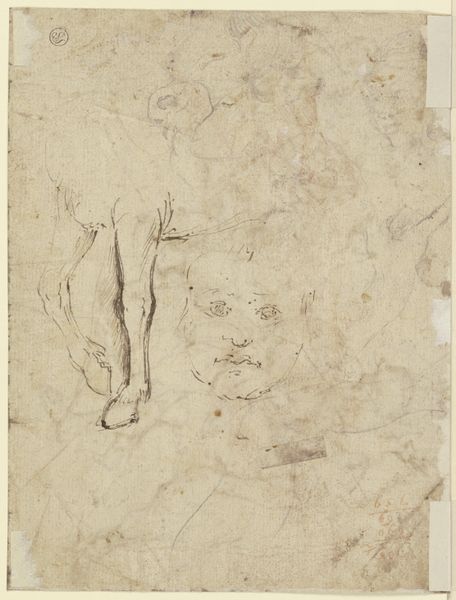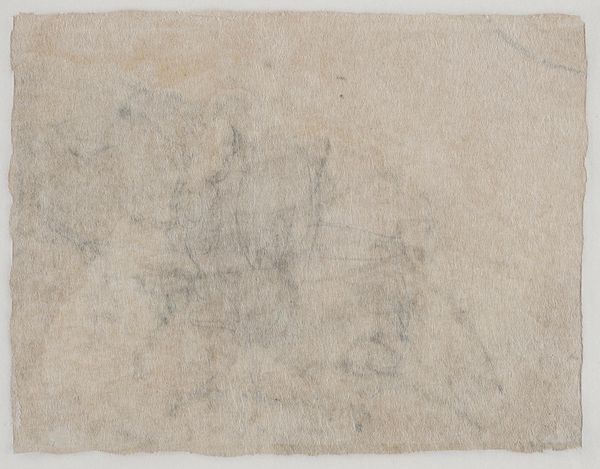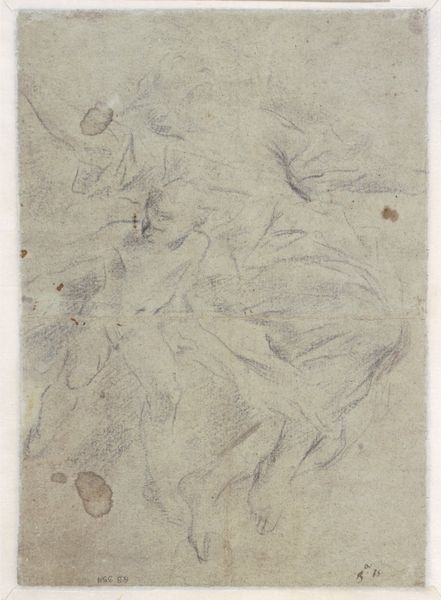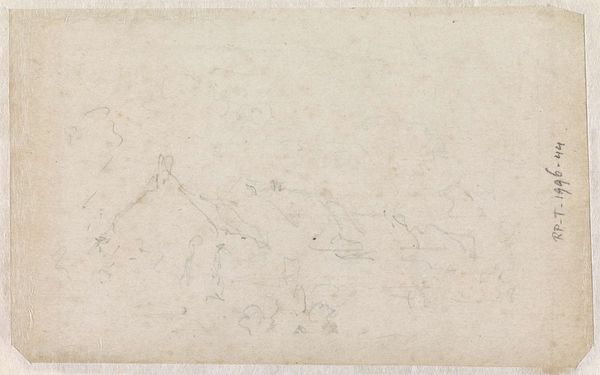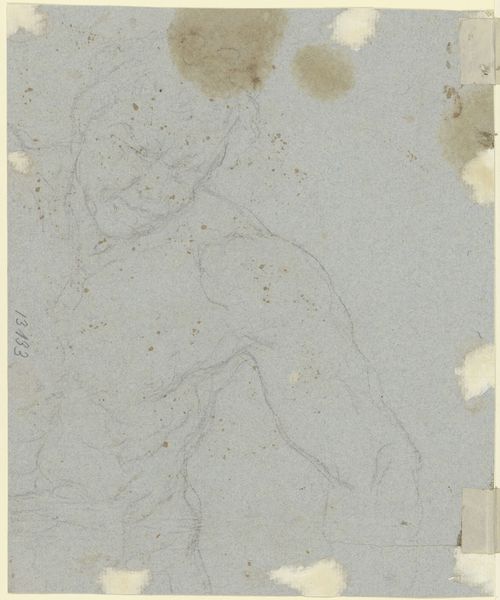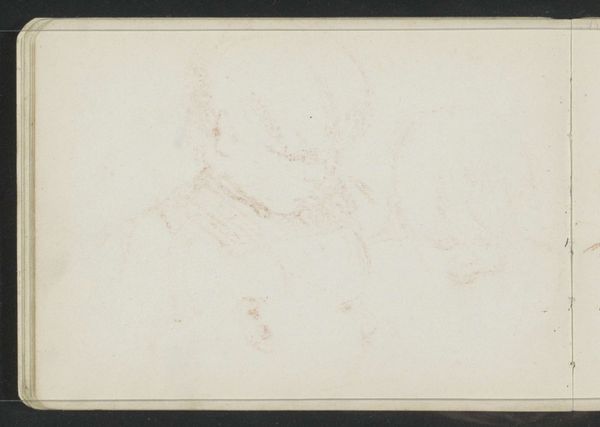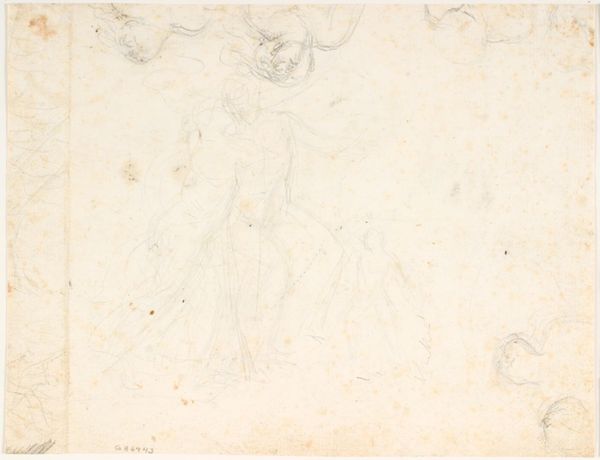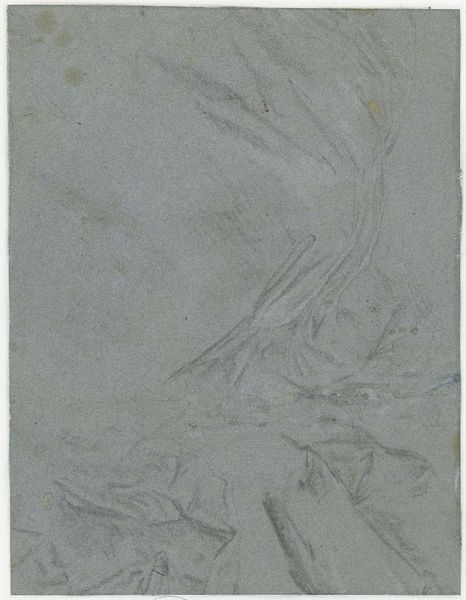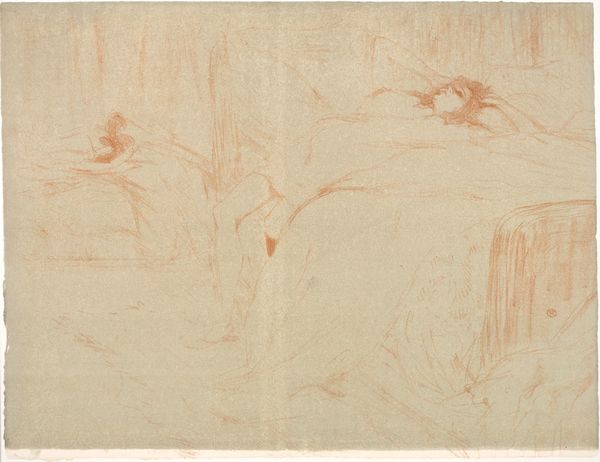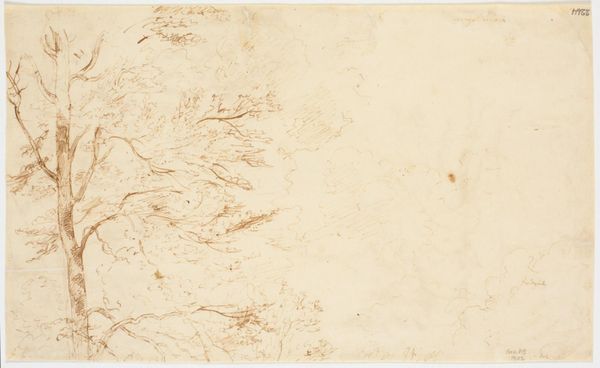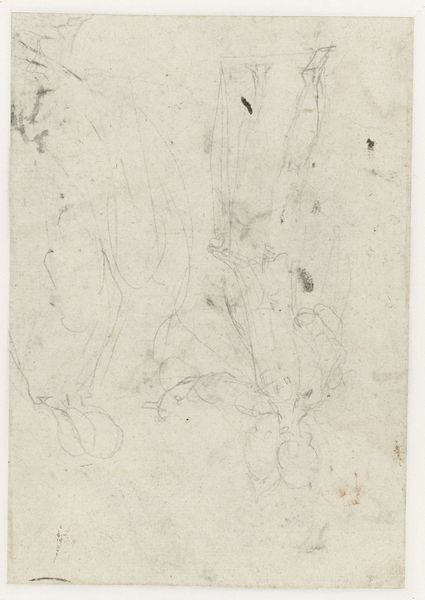
drawing, pastel
#
drawing
#
baroque
#
pastel chalk drawing
#
pastel
#
nude
Dimensions: height 239 mm, width 232 mm
Copyright: Rijks Museum: Open Domain
Curator: Here at the Rijksmuseum, we have a somewhat fragmented depiction of Hercules, or rather, "Afgesneden figuur van Hercules (Farnese)," created sometime between 1715 and 1765 by Carle van Loo. It's a pastel drawing, a study, really, on brownish paper. Editor: Brownish indeed! It gives this titan such a...melancholy aura. It's just a snippet, a muscular torso cropped rather intimately. You feel this monumental figure is vulnerable somehow, incomplete. Curator: That "snippet" is key, I think. We're so used to seeing Hercules presented as the epitome of strength and heroism. But what happens when we only see a portion of him, when his identity is reduced to mere musculature? It forces us to rethink his entire image, his role within society then, within myth now. Van Loo probably was thinking about the status of heroic art in his time. Editor: It certainly puts pressure on those pastel chalks, doesn't it? They need to carry the weight of a legend! The artist has emphasized the rippling of muscle and tendon in the arms and chest, seemingly focused on anatomy rather than divine grace. Though, speaking of anatomy, that truncated arm feels awkward... Is it meant to imply something about broken ideals? Curator: Or is it just an arm unfinished in a quick sketch? Van Loo made countless drawings and studies of this kind throughout his life; perhaps it was practice for a larger project. Regardless, the very nature of Baroque art was theatrical and charged with propagandistic power; depicting Hercules tested artists as they mediated public messaging and aesthetic expectations. Editor: Perhaps. But even just as "practice", this image resonates. Looking at this Hercules—all that power implied in fragmented form— makes me wonder about the pressures we put on icons. What parts do we choose to see? And what does it mean to cut them off? Curator: A poignant way to look at it. The drawing style and material choices create a complex portrait indeed. Editor: An apt observation for us both. It does offer us many ideas, it has kept us wondering.
Comments
No comments
Be the first to comment and join the conversation on the ultimate creative platform.
